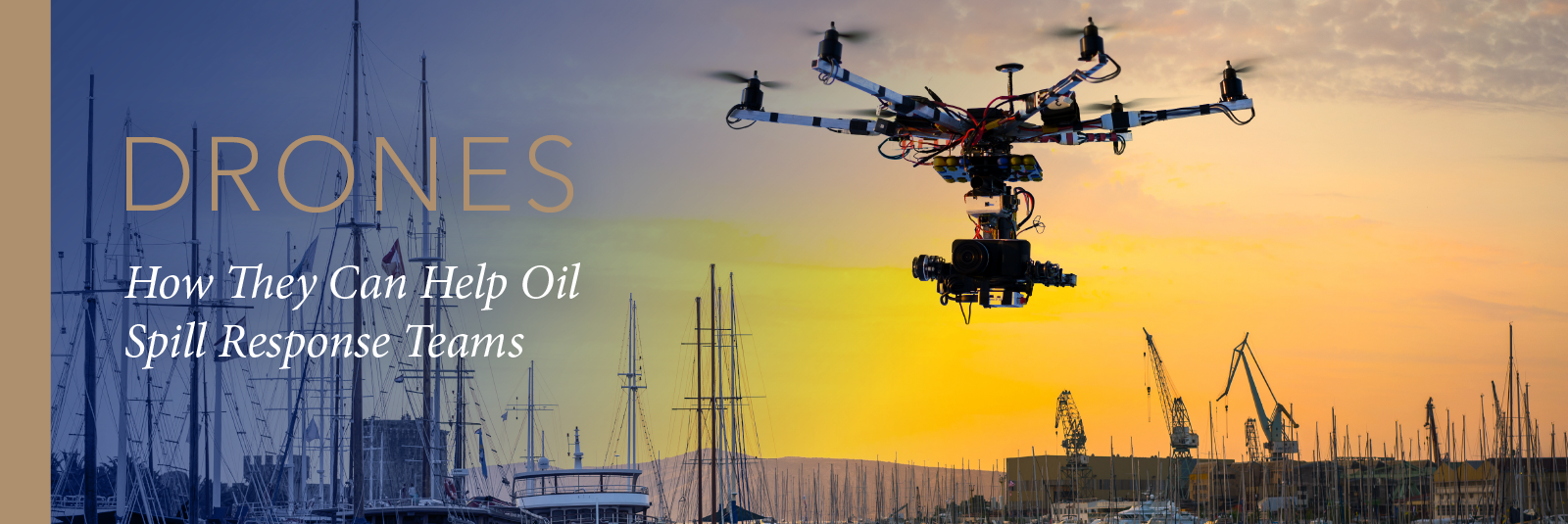Robots are flying through our skies. Aerial footage captured by unmanned aerial vehicles (UAVs) — colloquially known as drones — of picturesque landscapes or huge festival crowds has racked up views on YouTube for years. But these small flying machines are being called to duty for much more important jobs than filming unique birds-eye views.
The city of Houston deployed drones after Hurricane Harvey to help assess damage and aid relief efforts. Oil and gas companies fly drones from offshore vessels to perform visual inspections of rigs. E-commerce companies (namely, Amazon) are planning to use drones to deliver products to customers. Similarly, Norwegian marine operators are developing powerful drones to carry cargo between vessels and offshore platforms.
For oil spill response teams, drones have the potential to be invaluable. Here are three critical ways these UAVs can help contain and control worst-case scenarios:
- Improved Situational Assessments
Drones are incredibly efficient at collecting crucial data during an environmental emergency. Response teams can use footage from drone flights to identify, map, and measure oil buildup on coastlines, particularly in areas that can’t be accessed via foot. Drones can also help track offshore oil slicks and evaluate damage to vessels. In general, the data collected by drones gives oil spill response teams a better situational assessment of an incident, allowing them to make more informed decisions.
- Reduced Health and Safety Risks
The data collected during the situational assessments described in the previous point is normally done by humans. These are trained observers who are either flown above the oil spill in a plane or helicopter, or are on foot to inspect the spill directly. Using drones eliminates the health and safety risks these observers take when making their assessments in aircraft or unpredictable environments like rugged coastlines.
Another safety aspect drones can assist with is spotting people in need of help during search and rescue efforts. Drones are fast and tireless, making them excellent spotters.
- Faster Deployment
Even the most efficient aircraft or pilot needs a little lead time before it can be deployed, and seconds count during emergencies. Drones can launch immediately and will be on site at a spill much faster.
Also, drones can be deployed at any time, day or night. With drones “working” through the night, an oil spill response team can gather detailed aerial data for 24 continual hours, improving their ability to manage and contain the incident.
At Safe Harbor, we partner with the best emergency management teams in the industry because they have the skills and experience to capitalize on new technologies like drones. Forefront Emergency Management is one such partner. “The availability of drone assessment technology, via FAA licensed pilots, for emergency and project phase incident assessments has proven to be a tremendous assessment improvement over conventional methods,” says Pat Bergeron, President of Forefront Emergency Management. “The quality and type of data generated and made available real time; safer work operations; and cost effectiveness are all considerations for incorporating this assessment asset in your incident management process.”
The rise of the robots certainly brings challenges and complications for companies in all industries, but it’s clear there are big benefits for oil spill response teams who use drones to aid their efforts.
For any and all questions:





